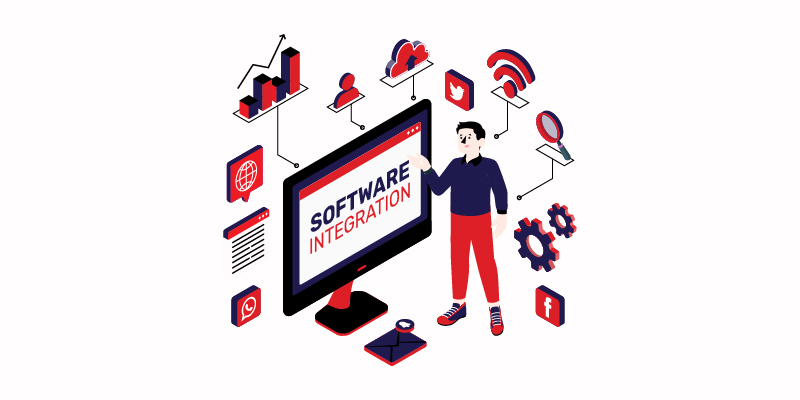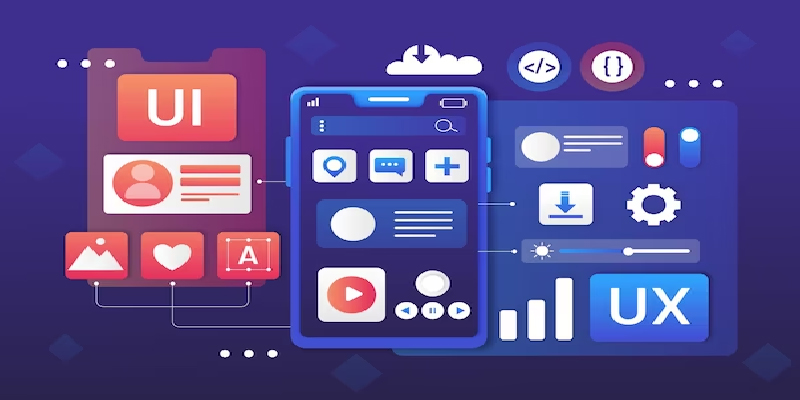Making an online tool that works well takes a lot of work. Focus on reliability, protection, ease of use, and cost-effectiveness to stand out from competitors. Finding the right mix can be challenging, but it’s essential to do so if you want to succeed.
Plan ahead if you want to be competitive and succeed. In this post, we talk about seven common problems with web development and show how The Logo Designs Company (LDC) solves scalability, productivity, security, and other issues.
Join us at LDC, a leading provider of mobile app development services, as we explore these challenges and help you navigate the complex world of web development. Let’s trigger!
1. Pick A Useful Set Of Technologies


Choosing which development tools your team will use to build the project is the hardest part of making web apps. Changing the technology mix in the middle of development is difficult and expensive. Therefore it’s crucial to pick your tools wisely. Your team must decide if a web application should use a serverless design and choose front-end and back-end tools.
When choosing the best tools and methods, keep the following in mind:
- Align The Technology Stack With The Solution’s Scope: Choose the right technology for your web app based on how big and complicated it is.
- Rely On The Knowledge Of Your Team: To reduce mistakes and boost output, use the technology your team is already familiar with. If you need to, you could hire someone else to do it.
- Focus On Tools That Are Well-Supported And Have Good Documentation: Choose tools that have a lot of help from the community to make it easier to solve problems and find answers quickly.
- Look at the project’s non-functional requirements: Consider how the different tools will affect each other. For example, choose React over Angular for better speed and faster startup times if you use web forms.
2. Keep Scalability In Mind


Your product’s growth depends on how well and cheaply it can be scaled up. But adding scaling methods will be expensive if you need to correct the number of users. It will almost certainly cause an application to be unavailable or run poorly. It’s essential to decide about scalability early in the application creation process. Remember the following to avoid that:
- Scaling Type: Depending on your funds, resources, and scaling goals, you can choose between horizontal scaling (adding more instances to spread the load) and vertical scaling (adding more computing power).
- Architectural Pattern: Choose an appropriate architectural pattern, like a plug-in architecture or a microservice architecture, that makes it easy to grow up or down by adding more resources.
- Asynchronous Client–Server Communication: Asynchronous client-server communication lets clients and servers reply to requests at their own pace, which increases productivity, independence, and scalability.
- Caching Engine: Use a caching engine to reduce the load on the database while scaling. You can do this by caching often-viewed data, like user information and essential application pages. This keeps speed up and keeps latency from happening.
3. Look At Integrations With Third Parties


One of the technical problems in software development is deciding whether to build features on your own or use a third-party solution. Some web development teams choose to only use their own code because they know it works well and is safe. But this method slows down growth and makes it more expensive.
You can discover an appropriate mix between writing your own code and employing someone else’s by obeying these rules:
- Evaluate Cost and Development Time: Compare the cost and time required to develop a feature from scratch versus using a licenced third-party solution. Consider the impact on your budget and time savings.
- Assess Documentation and Customisation: Research the customisation potential of third-party solutions and determine the feasibility and value of adapting them to your business and industry requirements. Examine the available documentation and community support.
- Mitigate Security Risks: Prioritise security when integrating third-party solutions by conducting thorough vulnerability scans and risk assessments. Review project documentation and community feedback to identify potential security issues.
You can approach us to make your development process highly easy and feasible. Our expertise extends beyond mobile app development services to web development, making us a comprehensive website design company. Whether you need mobile application development or website design services, LDC is your trusted partner. Approach us and discover why we are recognised as the best web development company in the UK.
4. Use Performance Planning And Collect Data


It is essential to test the performance of a web application so that you can see how it reacts to different loads and find any possible performance bottlenecks. QA workers often monitor how much bandwidth is used, how much RAM is used, and how much the disc subsystem is used.
Besides traditional testing, use speed engineering. To do this, early in the software development lifecycle (SDLC), performance needs must be analysed, potential performance bottlenecks must be found, and plans must be made to optimise specific parts that may affect performance, such as large media files or complicated calculations.
Using performance engineering at early stage you can ensure the application meets non-functional requirements and delivery of a high-performing result without problems. This proactive method is preferred over addressing performance problems later in development.
5. Change The UI And UX


The UI/UX design affects how people feel about your product when they use it for the first time. Many customers decide whether or not to buy and use a product based more on how easy it is to use and how it looks than on how well it works or protects their data.
One of the hardest things about making web apps is ensuring they have a good UI/UX. Everyone has a slightly different idea of a “good” UI/UX. Here are some ways to make your users feel comfortable:
- Intuitive Navigation:Design easy-to-understand navigation patterns, such as linking the logo to the home page and placing the search bar at the top. Follow web design rules to ensure smooth browsing.
- Research User Preferences:Study similar software and incorporate popular features and interfaces your target audience is familiar with. Avoid direct duplication but include elements that make your app user-friendly and intuitive.
- Accessibility for All Users: Prioritise accessibility by accommodating users with disabilities, older individuals, internet novices, and those facing challenging circumstances. Add video subtitles for hearing-impaired users or those in noisy environments to expand your app’s accessibility.
- Compatibility Testing: Test your app across multiple platforms, operating systems, and screen sizes to ensure consistent performance, visual appeal, and functionality. Provide a perfect user experience regardless of your platform or device.
6. Think About Security When You Build
When you protect your online application and private data, you stop attacks, data leaks, compliance issues, and damage to your brand. The OWASP Top 10, which looks at common security flaws and how to fix them, could help you ensure your system is safe.
Web app security problems include failed identification and security logs, broken access control, unsecured design, risky and out-of-date components, injection attacks, security misconfigurations, server-side request forgeries, and software and data integrity problems.
Check every version of a product for security and vulnerabilities.
By adding code, the system is kept safe. Automation speeds up testing by taking care of things like port scanning, configuration mistakes, and libraries and tools that are outdated or have security holes.
Putting security first and checking your web service often can help keep it safe from threats.
7. Ensure Services Are Accessible In The Course Of Updates


Web apps are always running on the Internet. Service stability is at risk when making a new app version. It takes some time for distribution services to copy files, restart web servers, update the database, etc. However, customers won’t stick around once the rollout ends; they’ll go to a different service.
You can ensure the applications are always available during deploys via:
- Use A Blue-Green Deployment Approach: Switching the environments for staging and production to thoroughly test the application in the stage before putting it into production without any problems.
- Set Standards For A Successful Launch: Set clear criteria for judging the success of a deployment, such as an error-free deployment, the expected results of user acceptance testing, and meeting speed metrics. You should roll back the deployment as soon as the conditions are met.
- Use DevOps To Set Up Pipelines For Updates: When you set up development and deployment pipelines, you can keep sending out minor updates that don’t change how the service works.
- Deploy In Many Regions: When you put your app in the cloud, choose a multi-region architecture to spread across different server sites. This makes the app more accessible and resilient because it can still be used even if one server or place is down. Remember to pay for the upkeep.
Conclusion
To build a successful web application, it’s crucial to address challenges, meet requirements, and anticipate future needs.
Our web app and website design company specialises in delivering the perfect website and mobile app development services, providing solutions that align with client requirements and industry standards.
Not only this, our expertise extends to innovative logo design, making us the best logo design company in UK. With a focus on future-proofing, we aim to save clients’ money in the long term.
Contact us, our innovative web/app developers or the best logo designers in UK, to collaborate on designing your logo or next web application.


